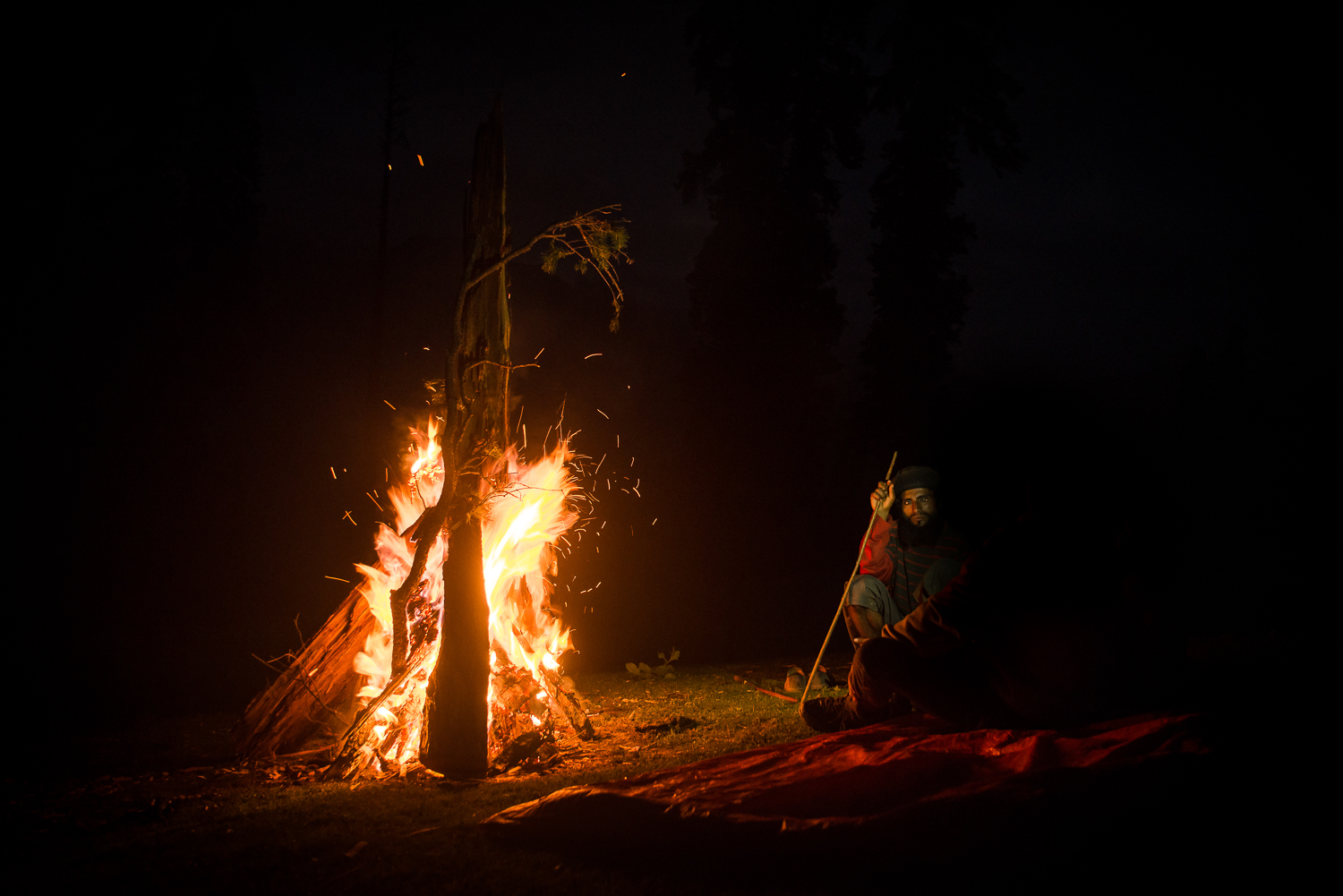After arriving in Delhi I met a very friendly man from Kashmir called Ishak. Just by chance he gave my rickshaw driver directions to the hostel I was staying at when he seemed a little lost. Ishak’s uncle happened to have been staying in my home city Glasgow for the past 20 years so we struck up a conversation. We drank some very nice hot chai together after I had settled in my accommodation and had a very interesting discussion about India and many other things.
He was incredibly insightful and genuine and I knew fairly quickly that I had met a new friend. He showed me the place where he was from and where his family currently lived, a beautiful place called Srinagar in Kashmir. They owned an old wooden Raj style houseboat called Young Shalimar on the idyllic Nigeen Lake that echoed with the entrancing Islamic call to prayer 5 times a day.
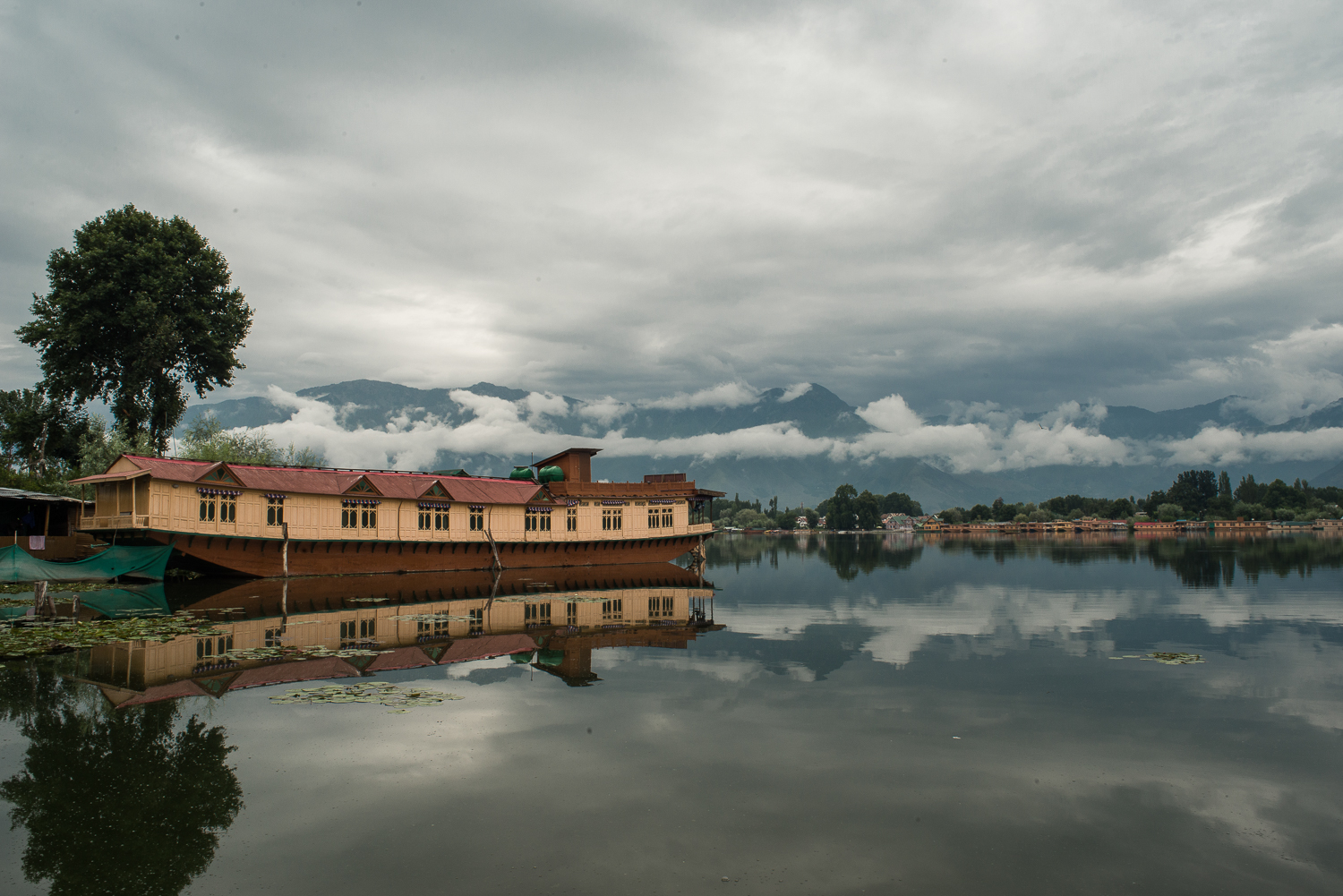
They frequently set up treks in the Kashmir Himalayas for people from all corners of the globe. He showed me pictures of the dramatic Kashmiri mountains, the ancient glaciers, the lakes and rivers which were hot spots for catching brown and rainbow trout.
As soon as I saw this incredible landscape I knew instantly that I had to go there. I wanted to go so much that we organized a flight early the following morning from Delhi to Srinagar and to live with his family on the houseboat.
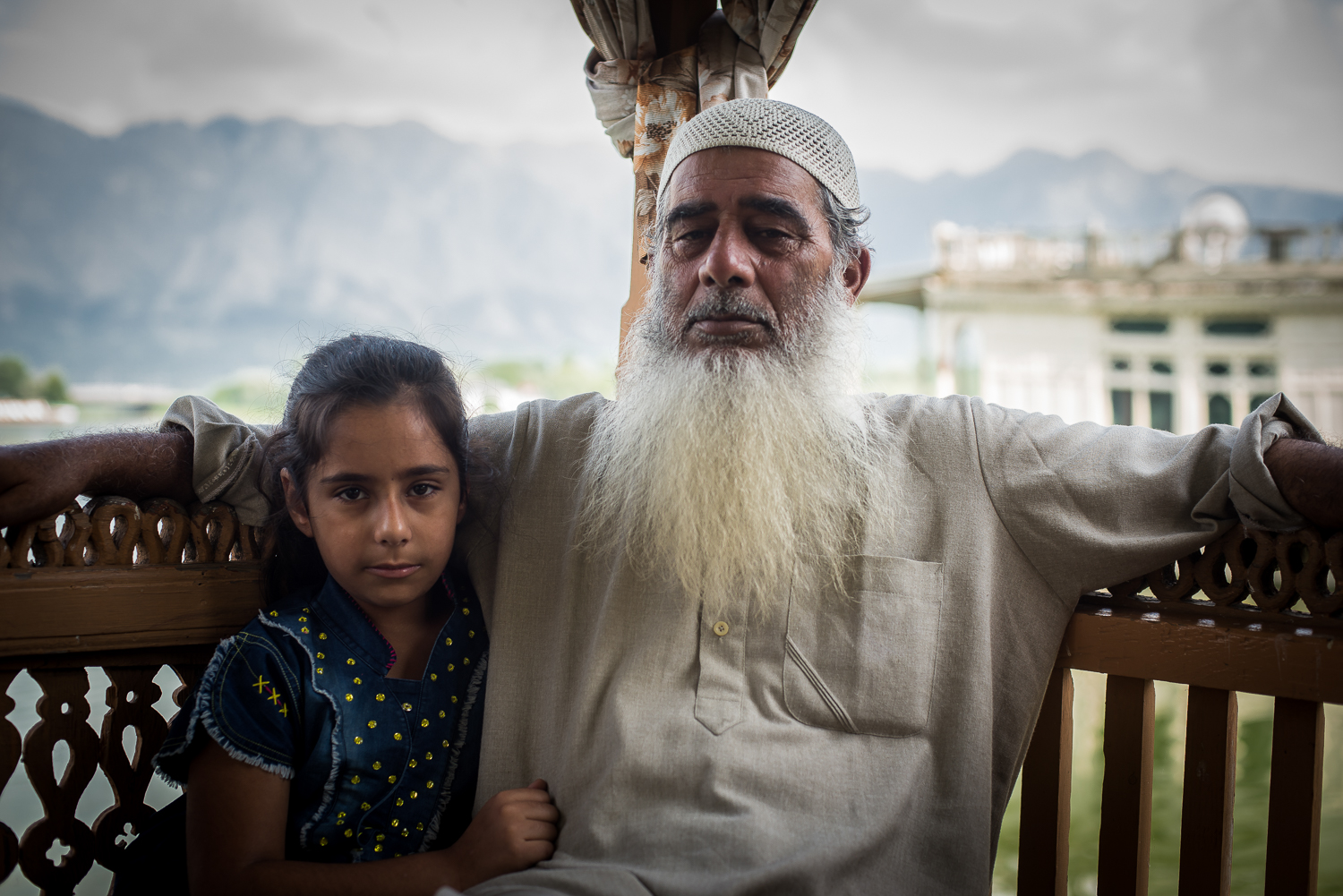
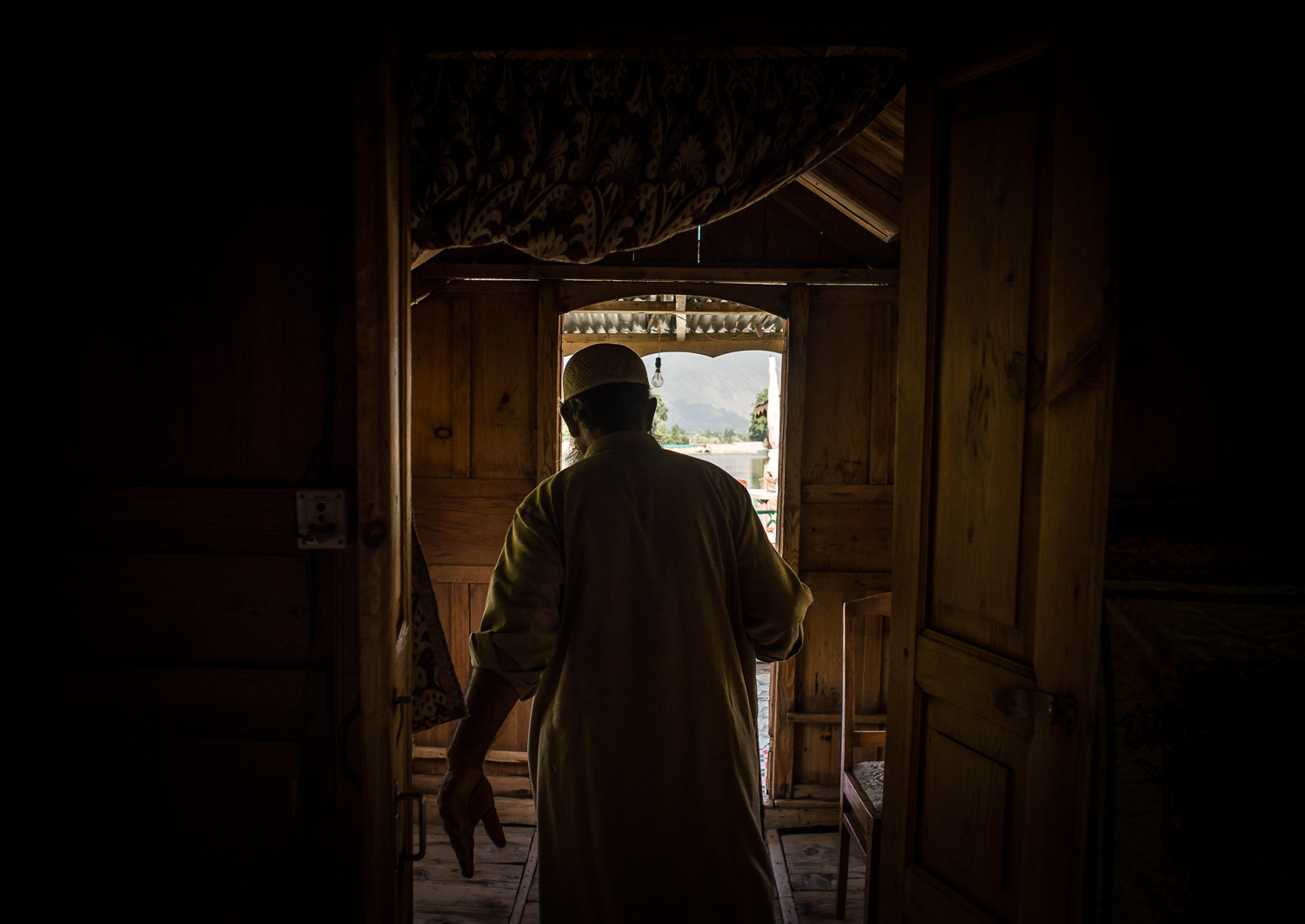
I was greeted by a warm reception from Ishak’s brother Imran, his father Kadir, his mother Saida, his sister Shazia, and Shazia’s daughter Shafia. They showed me to my accommodation, which would be my home for two weeks after my hike. The houseboat was made from the local Deodar trees which had intricately carved wooden panels. The Dogra Maharaja of Kashmir restricted the building of houses within the valley in the late 1800’s, so the British who were ruling the majority of India at this time evaded this by building luxurious houseboats on Dal and Nigeen Lake.
My room consisted of a comfortable double bed with Kashmiri carpet and other handicrafts decorating the wooden walls. Walking down the hallway from my bedroom to the balcony felt like I had time warped to the early 1900’s due to the absence of any modern design or renovation. The Shankracharya Hills made up for most of the spectacular view from the balcony, floating on the tranquil Nigeen Lake with frequent Shikaras (colorful wooden boats similar to the Venetian gondolas) passing by.
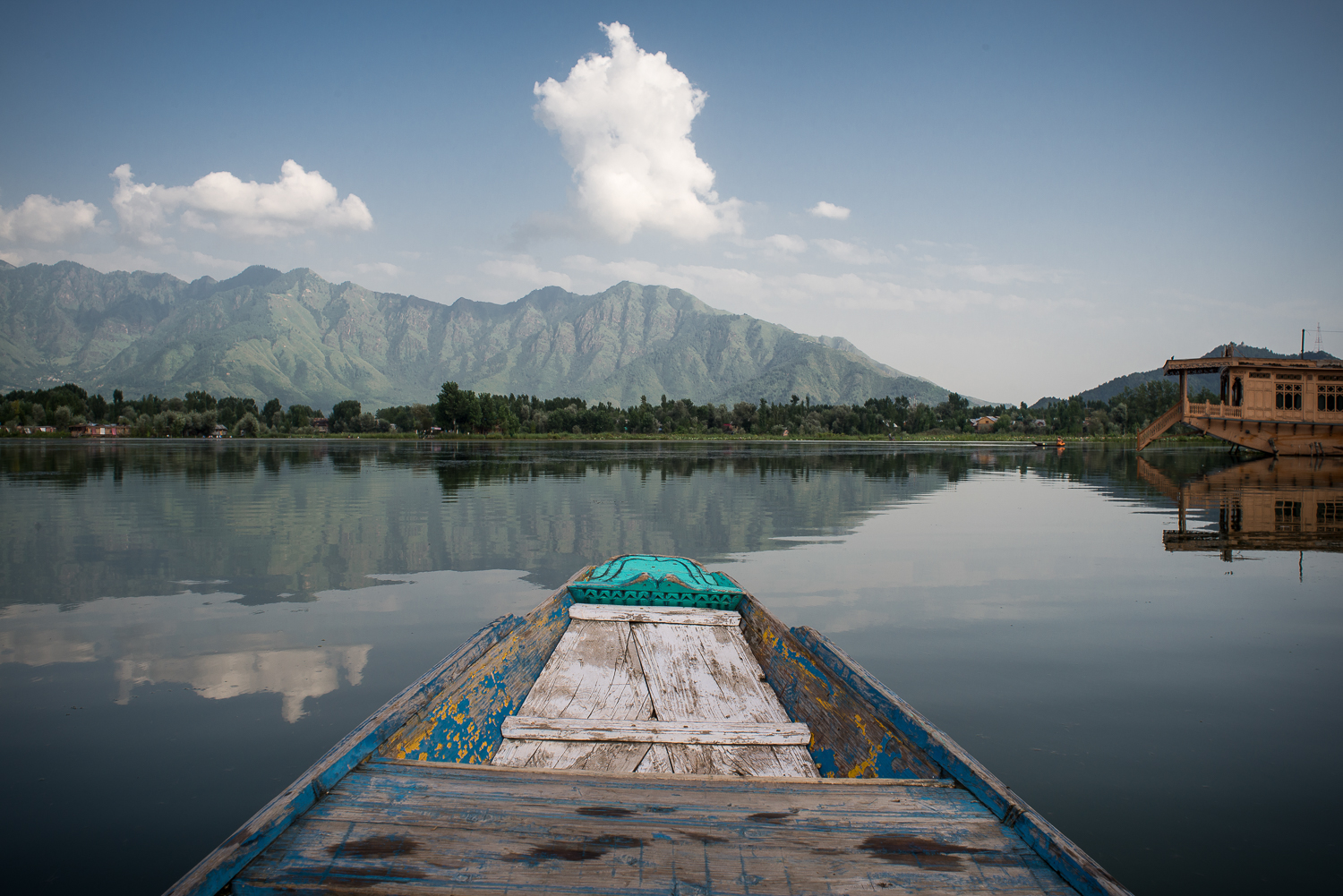
The lake was surrounded by floating gardens and vegetable markets with fields of lotus flowers sailing on the water. I felt like I had found a part of paradise. After a chat with Imran over hot Kashmiri tea and Czhot (a Kashmiri flat bread), he arranged a 7 day trek for me. I had 2 very friendly Kashmiri guides, Riaz from Srinagar (our talented chef cooking up delicious meals 3 times a day on a metal gas stove) and Ishfaq the ‘Pony-man’ from Sonamarg who owned and guided the horses.
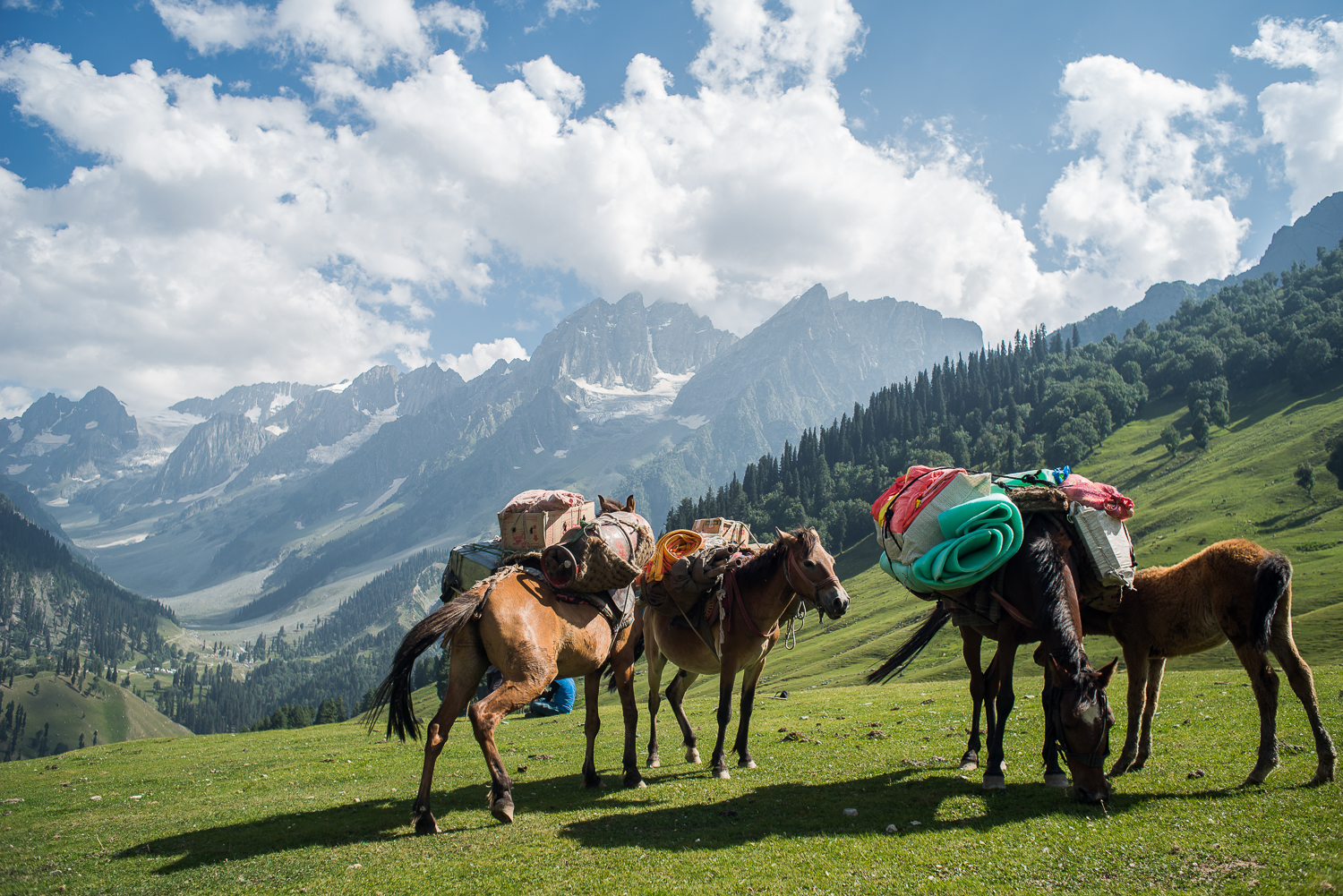
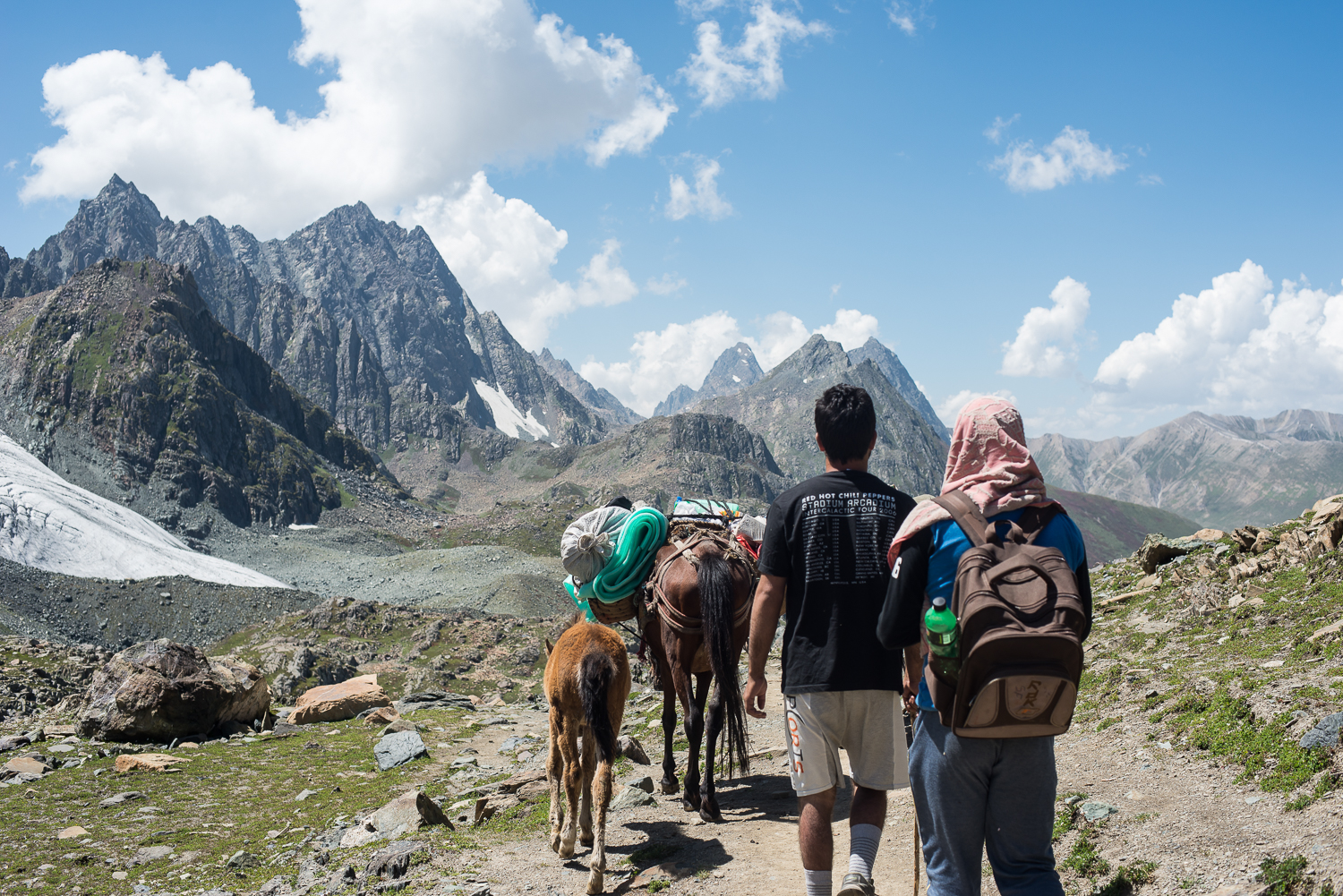 We set off not far from Ishfaq’s hometown with 3 strong medium sized horses and one of the female horses 6 month foal who was to learn and adapt to the route that we would be walking. They carried our food supplies for the week, our tents, cooking stove and blankets, the foal of course carried nothing. We walked for around 5 hours each day reaching a height of 14,000 feet.
We set off not far from Ishfaq’s hometown with 3 strong medium sized horses and one of the female horses 6 month foal who was to learn and adapt to the route that we would be walking. They carried our food supplies for the week, our tents, cooking stove and blankets, the foal of course carried nothing. We walked for around 5 hours each day reaching a height of 14,000 feet.
I’ve never been at that kind of height before, so breaks were frequent due to the depletion of oxygen and temperatures were as high as 35 degree Celsius during the day. Prior to this, I did most of my hiking in my homeland by scaling the Scottish Munro’s (summits above 3,000 feet), and also some mountainous regions in Eastern Europe. My fitness was not an issue, however the heat and altitude was a completely different environment for me. Sometimes this was frustrating because I usually enjoy hiking for hours, but I was pretty glad to have the rest after the testing 5 hour trek each day. This time of rest was accompanied with chef Riaz’s delicious meals.
The traditional Kashmiri tent, which was made up of simply 1 piece of thick orange material that was held up by two bamboo poles at either side with another bamboo pole connecting to make the roof was put up. Inside was a type of floral design on the left and right wall with a flappy textured material giving the impression of a timeworn sea fossil. This was to be the interior of our pop up mountain restaurant. It was a straightforward set up of a metal gas stove and two efficiently functional hobs accompanied with a large domestic gas tank. The meals varied from Dal, Chicken Curry, Mixed Veg Curry, Goats Cheese Curry, Fried Fish and Fried Green Beans, always served with a giant mound of steamed rice.
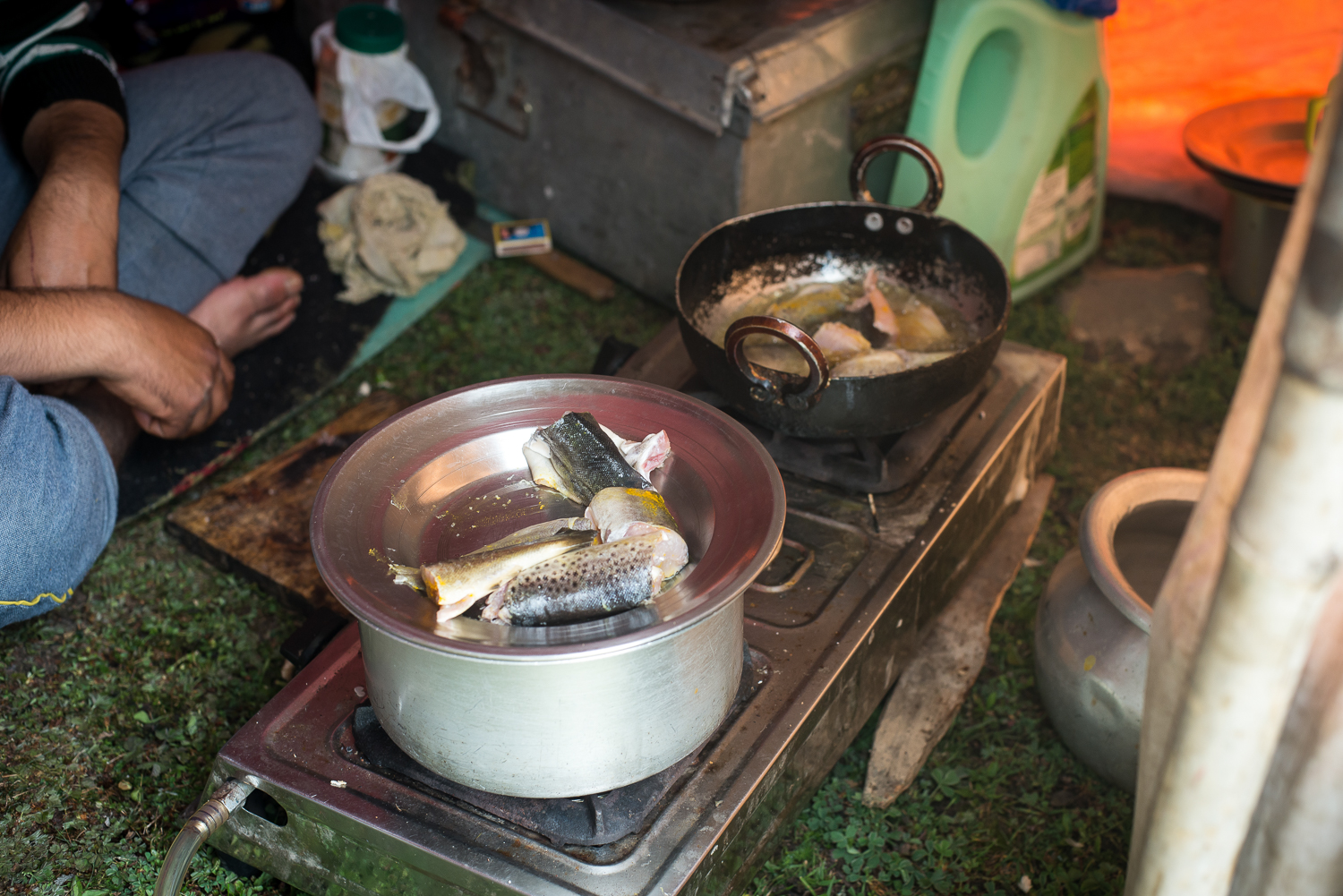
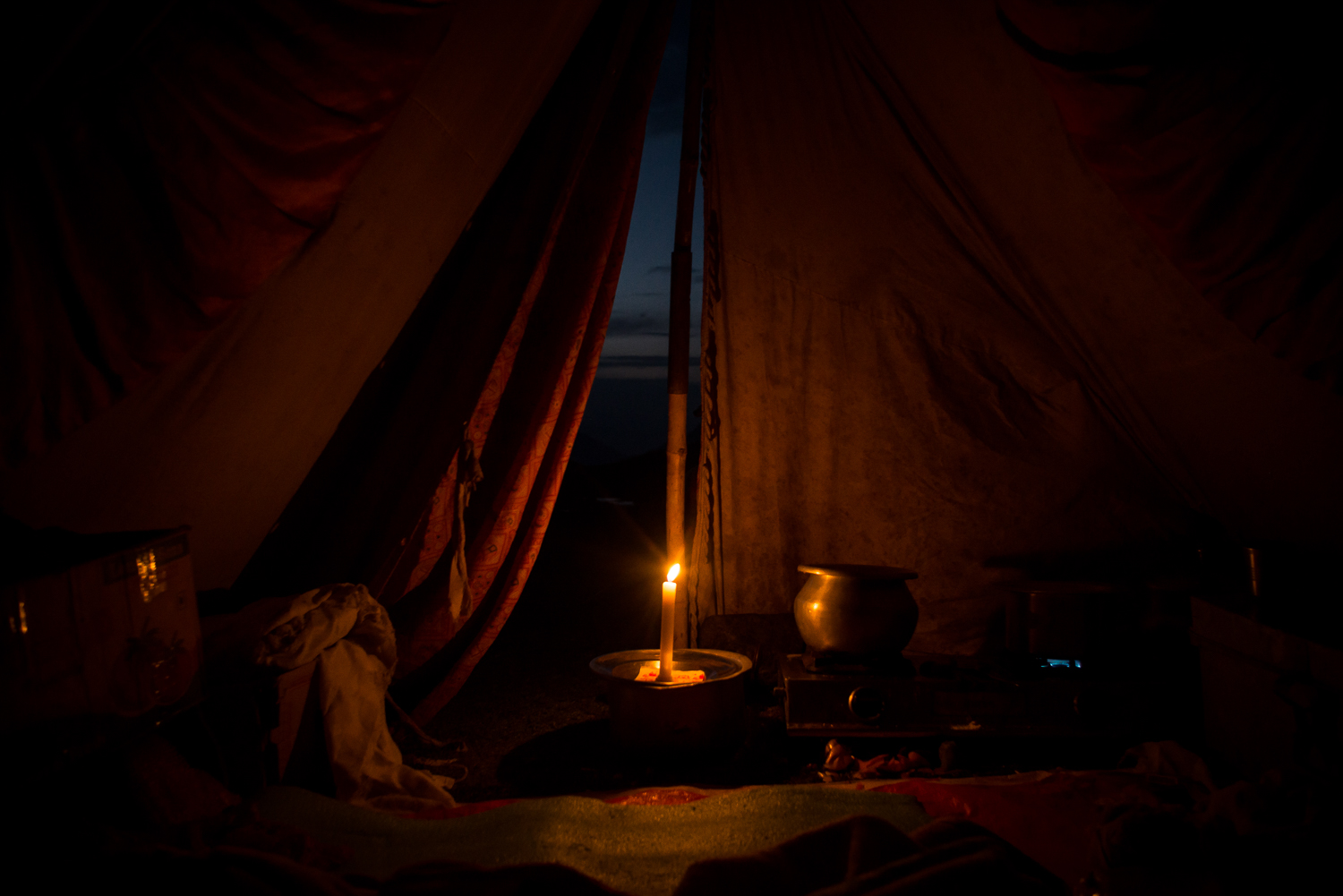
We also carried four chickens in a box to prepare a fresh chicken curry. At night I would drink cups upon cups of Kashmir tea and listen to Riaz and Ishfaq talking in their local tongue. Their English wasn’t perfect so it was only from time to time we would have a chat, but I was happy for my thoughts to float away while they conversed with one another. After sunset it got very cold and the heavens opened up like nothing I’ve ever seen before.
The sky was crystal clear and covered in stars showing the Milky Way in all it’s glory, shooting stars were occasionally zipping by and distant galaxies were also visible.
It was my first true look at the universe beyond our planet which filled me with wonder.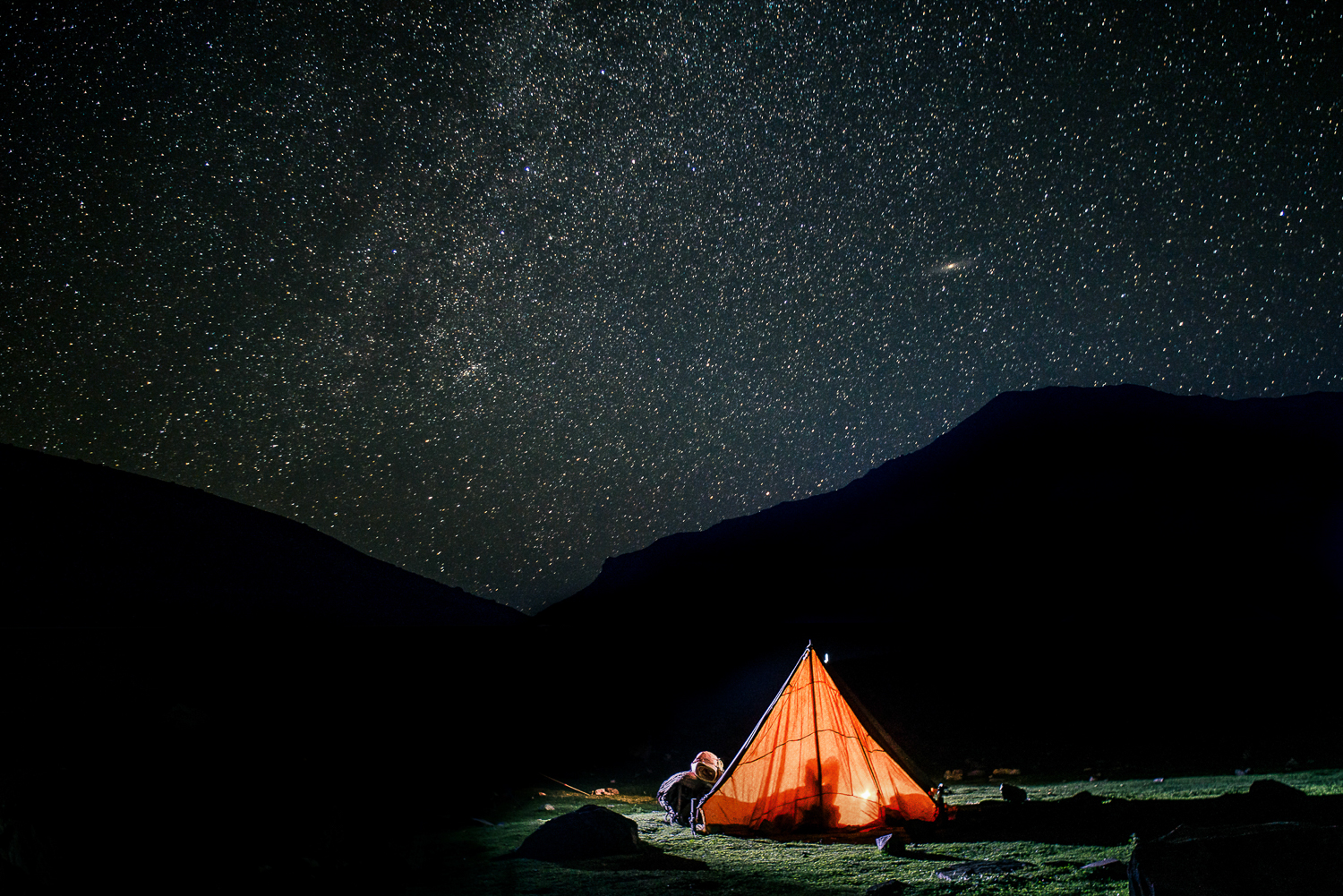
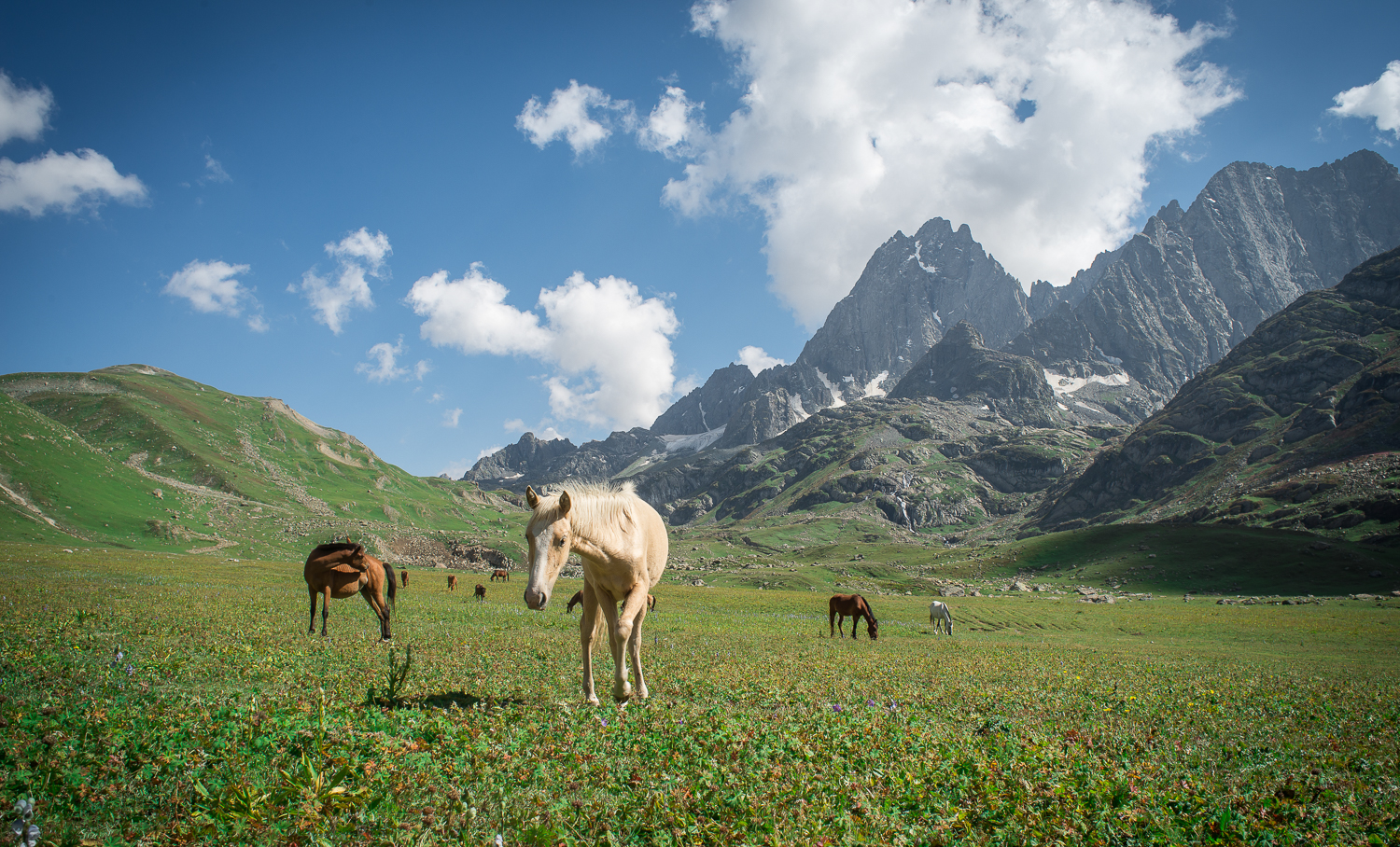
One of the highlights of the trek was when we were climbing to the 14,000 feet summit with the breathtaking Vishansar Lake below us. This lake is of great importance to the Kashmiri’s and means the “The Lake of Vishnu” which is one of the principal deities in Hinduism. The lake was surrounded by vibrant green meadows, snow covered mountains, and ancient glaciers which projected from the gorges.
Another beautiful sight was Gadsar Lake, which means “The Lake of the Fishes”, a natural habitat for brown and rainbow trout. The lake is mainly fed from the melting of the surrounding glaciers, providing freezing cold Himalayan water, which has to be the most fresh water in the world! There is an interesting myth about Gadsar Lake which can also be called Yemsar, meaning “The Lake of the Demon”. The shepherds believe that there lives a freshwater lake monster in the form of an octopus which drags creatures from the shores by its tentacles into the water. The shepherds therefore graze their flocks on the outskirts of Gadsar to avoid the potential danger.
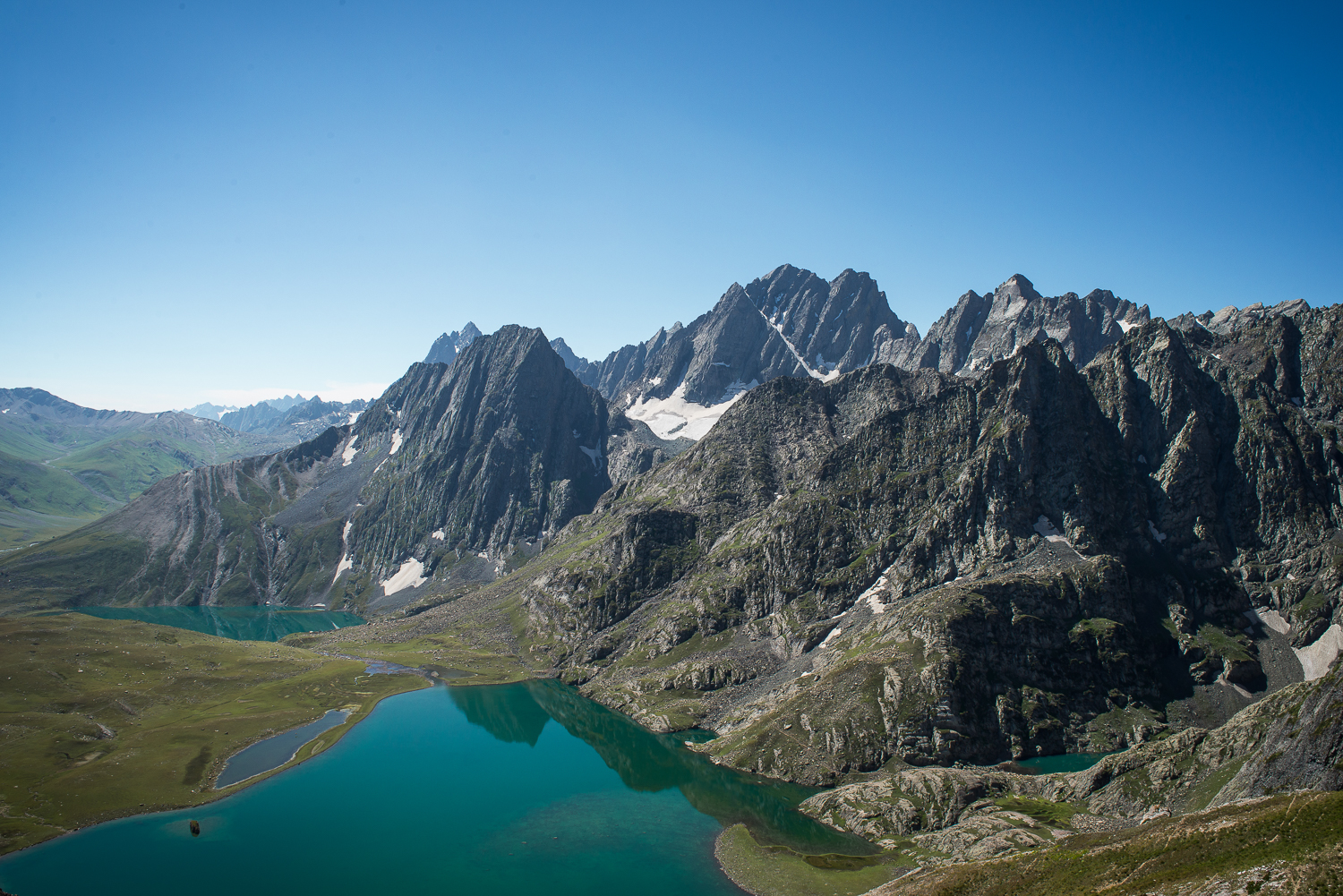
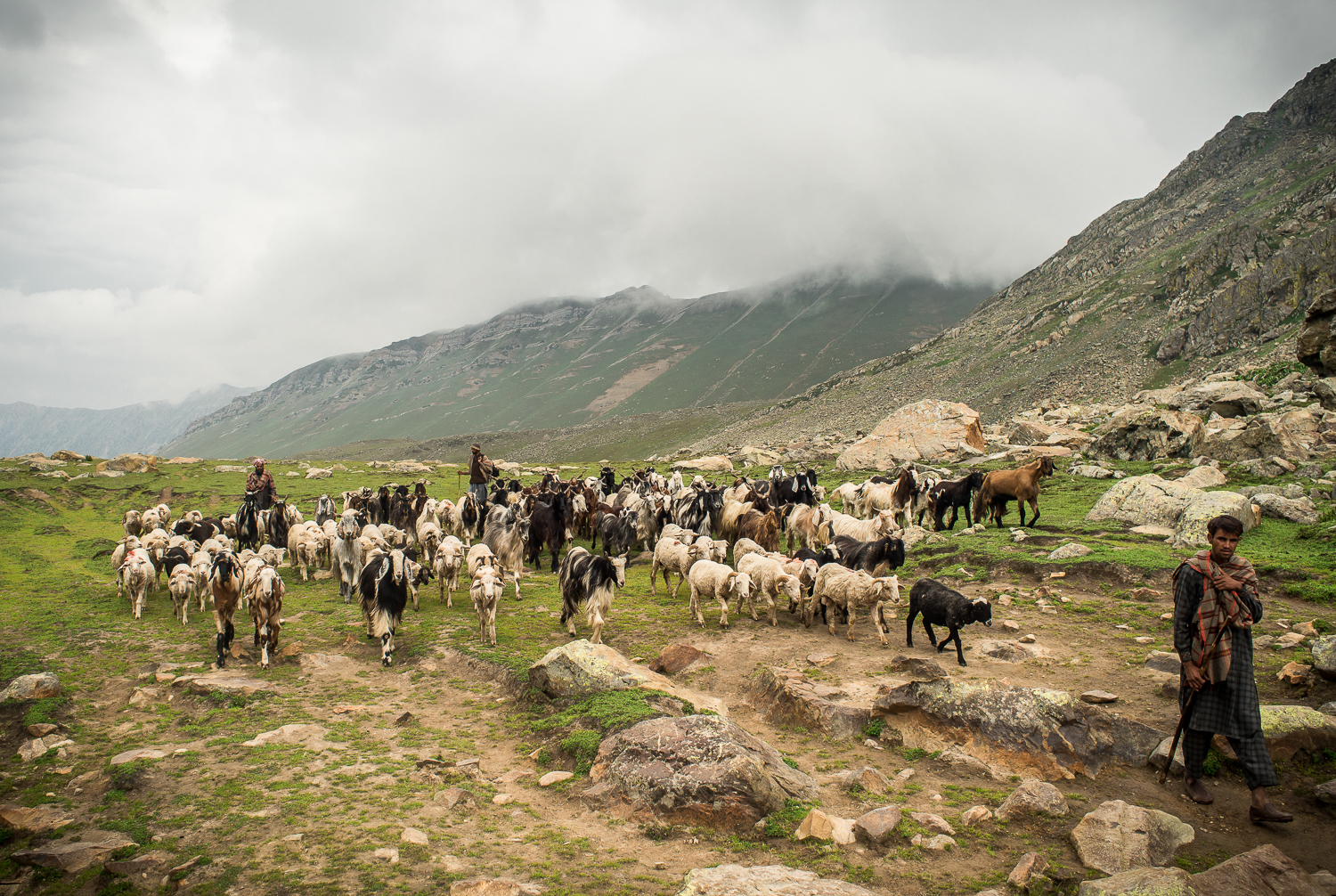
I had the honor of meeting some passing Kashmiri shepherds and gypsies as we walked through the valleys. Some shepherds had over 100 sheep or goats! They were guiding them through the mountains by making high pierced whistle sounds or by rattling an empty can which contained a stone inside. The gypsies tended to have goats, cows or horses and relocated their families during the summer season to hand built homes made of stone, wood and tarpaulin roof.
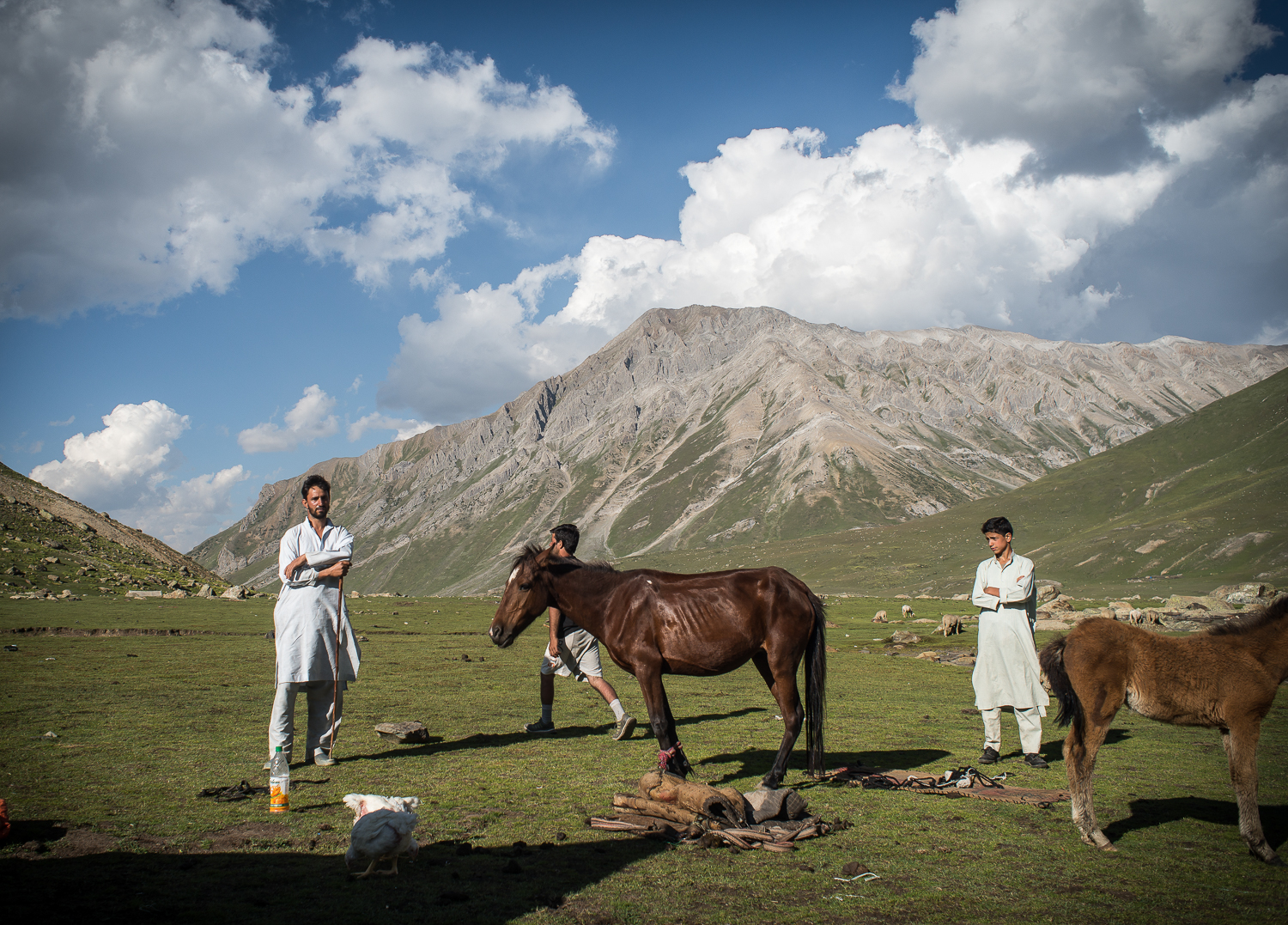
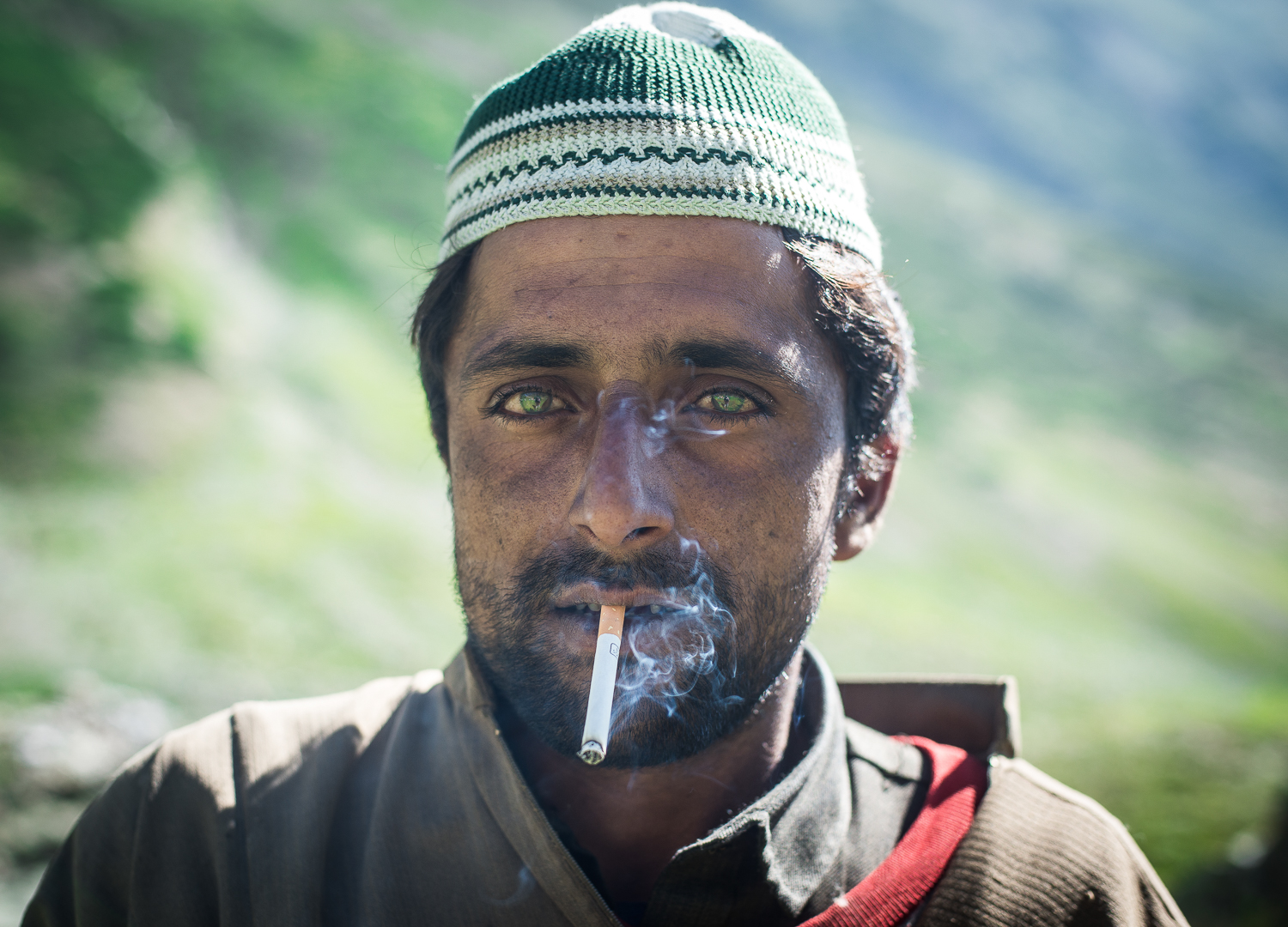
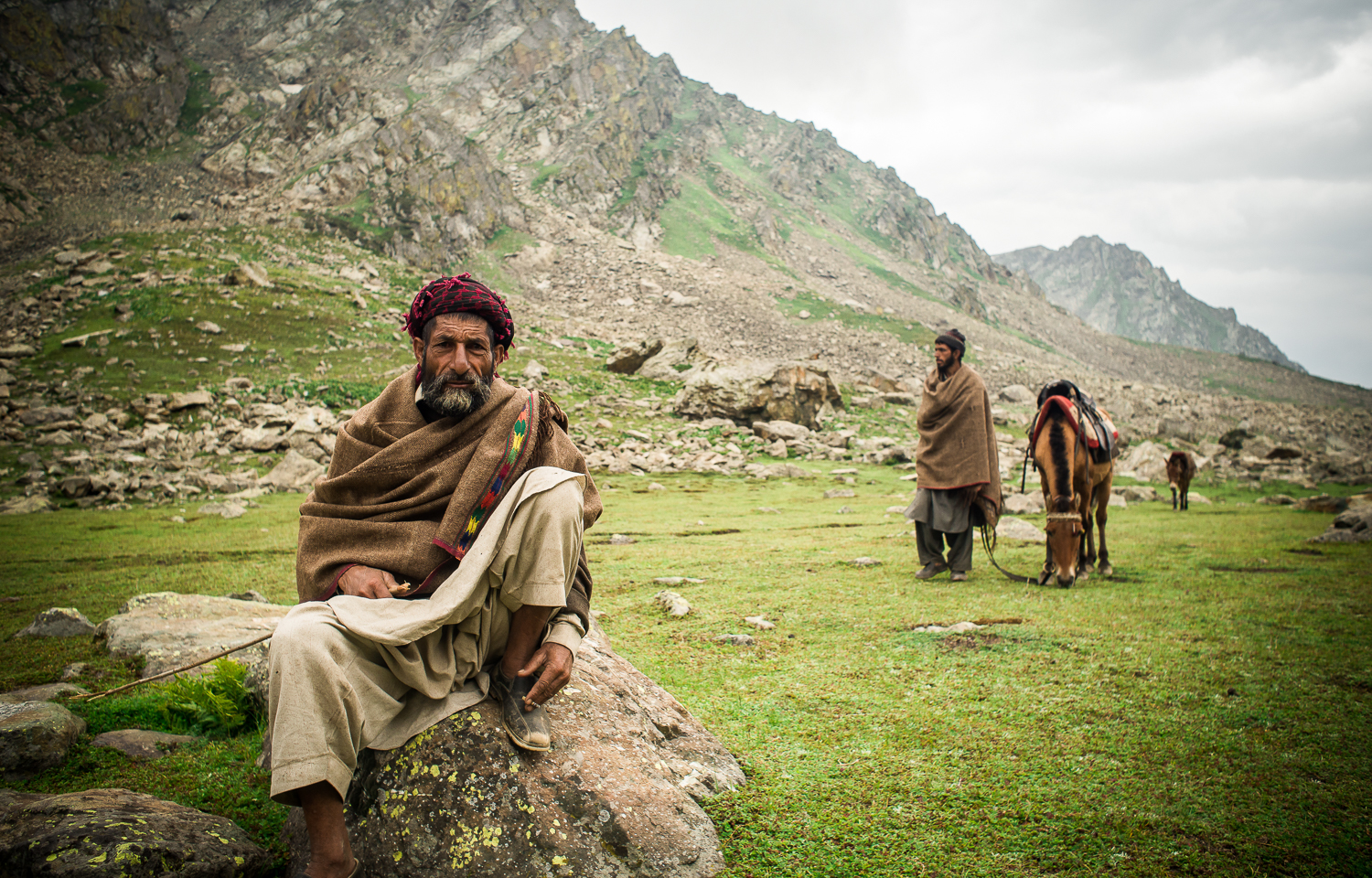
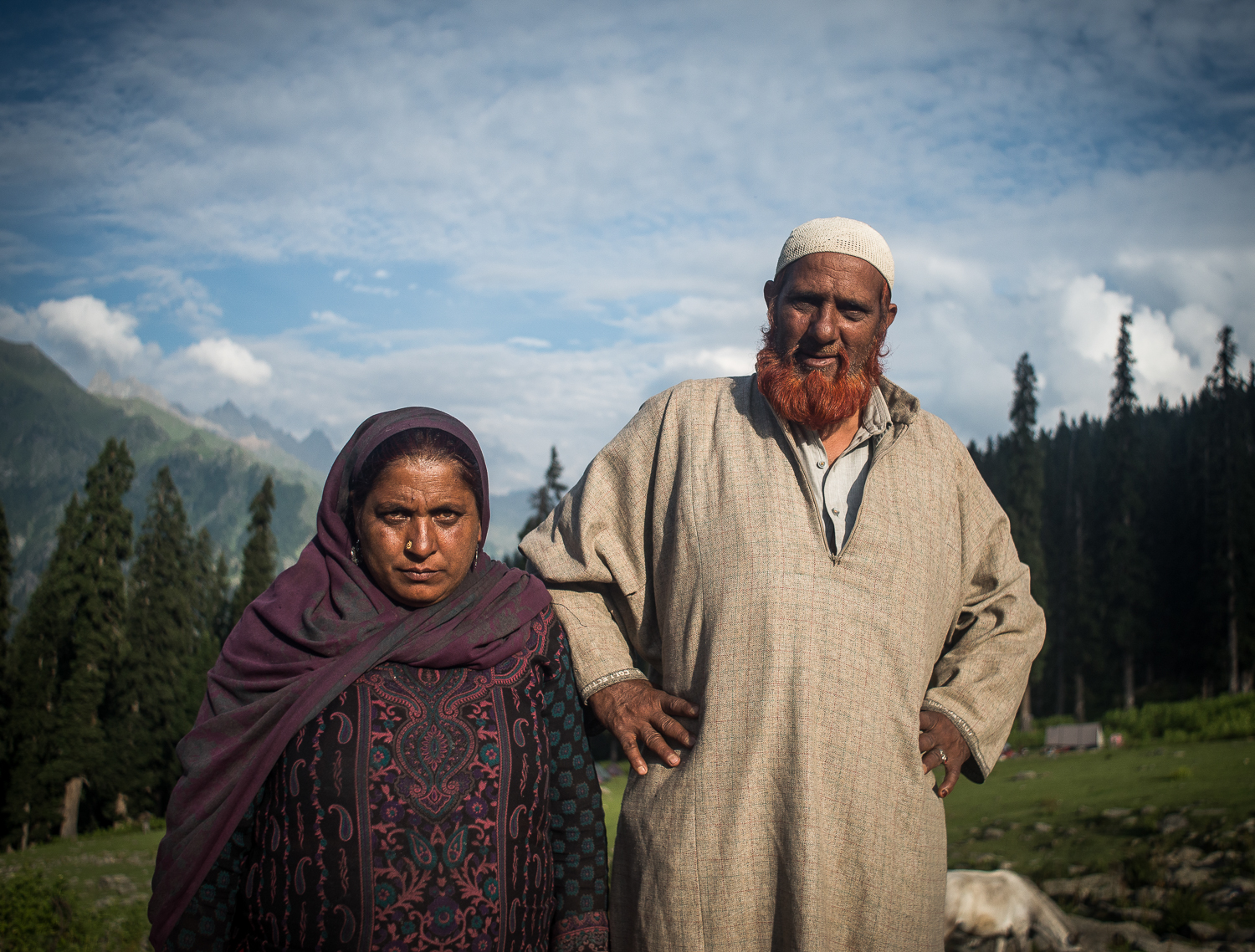 On our last night we visited a gypsy home and had some noon chai (a Kashmiri tea made from special tea leaves, milk and salt). At this time I was asked to marry a beautiful gypsy girl by her uncle. I had to politely say no but it gave us all a good laugh.
On our last night we visited a gypsy home and had some noon chai (a Kashmiri tea made from special tea leaves, milk and salt). At this time I was asked to marry a beautiful gypsy girl by her uncle. I had to politely say no but it gave us all a good laugh.
Later that night we collected some wood from the local deodar trees and set up fire as a type of ceremony to our last night drinking Kashmiri tea underneath the starlight.
www.instagram.com/danielodonnell67
www.facebook.com/dancr4ft
www.flickr.com/photos/dan-supertramp

